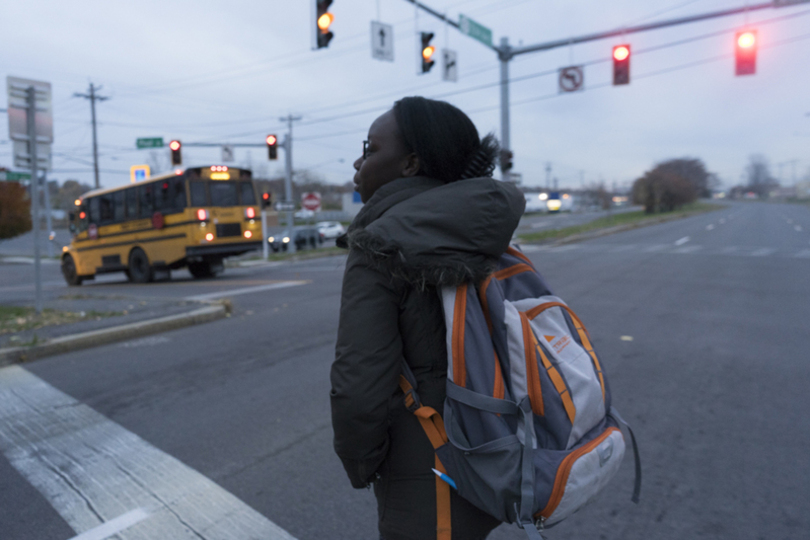Racial diversity remains an issue in the US teaching workforce, Department of Education report finds

Courtesy of Marianne Barthelemy
The Department of Education report stated teachers of color are positive role models for students in breaking down negative stereotypes and preparing students to live in a multiracial society.
Research done by the United States Department of Education shows the racial makeup of the elementary and secondary school teacher workforce does not match the diversity of students or the population at large.
The State of Racial Diversity in the Educator Workforce research report, released in May 2016, outlined diversity within schools nationwide. While students of color are expected to make up 56 percent of the student population by 2024, the teaching population remains “overwhelmingly white,” according to the DOE.
The term “white” in the DOE report refers to a socially constructed category of individuals who self-identify as of European descent and non-Hispanic.
The most recent DOE Schools and Staffing Survey showed 82 percent of public school teachers identify as white, a figure which has remained almost unchanged for the past 15 years. Data from 2000 found that 84 percent of teachers identified as white.
The report not only found elementary and secondary school educators in the U.S. are “relatively homogenous” but education leaders are also predominantly white.
In 2016, while 76 percent of students in the Syracuse City School District identified as a person of color, 90 percent of teachers identified as white. This extreme racial gap has been the target of change for Syracuse programs such as the Urban Fellowship Program, which looks to increase representation of their student body through a diverse faculty.
In exchange for a five-year commitment to teach within the Syracuse City School District, program participants receive acceptance into Syracuse University’s Master’s of Education program as well as a promised starting salary of $47,500.
The DOE findings show that a large majority of education majors and those enrolled in teacher preparation programs are white. For the 2012-13 academic year, only 25 percent of individuals enrolled in a teacher preparation program based at an institution of higher education were people of color.
Lee Teitel, faculty director of Harvard University’s Graduate School of Education’s Reimagining Integration: The Diverse and Equitable Schools Project, partners with schools and school districts to research and provide tools to increase diversity within their faculty and staff.
He said it’s helpful for school and school districts to talk about the teacher screening process and issues of retention.
“People find is (sic) that there is a lot of implicit bias primarily when organizations are screening to hire faculty to replace their roles among their colleagues,” Teitel said. “That implicit bias, often in ways that people aren’t even aware of, will steer them away from applicants of color.”
The issue is a consequence of opening doors, Teitel said. Opportunities and paths into the field of education are more accessible for white individuals than people of color. Changing this would benefit the increasingly diverse population of students significantly, he added.
“It’s great to have kids of color seeing people whose life experience is more like theirs in professional roles,” Tietal said. Shared experiences help teachers of color connect with students in different ways, he added.
The DOE report stated teachers of color are positive role models for students in breaking down negative stereotypes and preparing students to live in a multiracial society.
Improvement can be seen in areas of the country that implement programs to increase the teacher population. Within the Boston Public Schools, 37 percent of public school teachers identify as nonwhite and 25 percent of new teachers hired in the 2015-16 school year identified as African-American, according to the DOE.
Boston schools have had a history of implementing programs to increase diversity in their teaching workforce. One of those programs — the Boston Public School High School to Teacher Program — is designed to seek out students who show characteristics of a good teacher.
The DOE report found new classroom teachers are more diverse than the current teacher workforce overall. The percentage of newly hired African-American and Hispanic teachers was higher than the current number of African-American and Hispanic teachers in all geographical areas.
Despite the suggested increase in diversity, the report concluded the elementary and secondary educator workforce is still “overwhelmingly homogenous.”
“If we are to meaningfully increase the diversity of the teacher workforce, more must be done, starting with preparation and completion, to recruitment and selection, and then placement and retention,” the report stated.
The 2017 fiscal year budget highlighted “Expanding Support for Teachers and School Leaders” as a major initiative and adopted the proposed $125 million for the Teacher and Principal Pathways program. The budget also allocated a mandatory $1 billion to the RESPECT: Best Job in the World program.
Both programs support the expansion of diversity and number of new teachers and principals who have “high-quality” training, especially in high-needs schools.
President Donald Trump’s 2018 fiscal year budget proposal outlines a 13.5 percent decrease in the DOE’s budget. Although the TPP and RESPECT programs are not listed, $43 million is to be cut from the Teacher Quality Partnership program, which provides grants aimed toward teacher preparation programs to grow the number of quality teaching staff.




